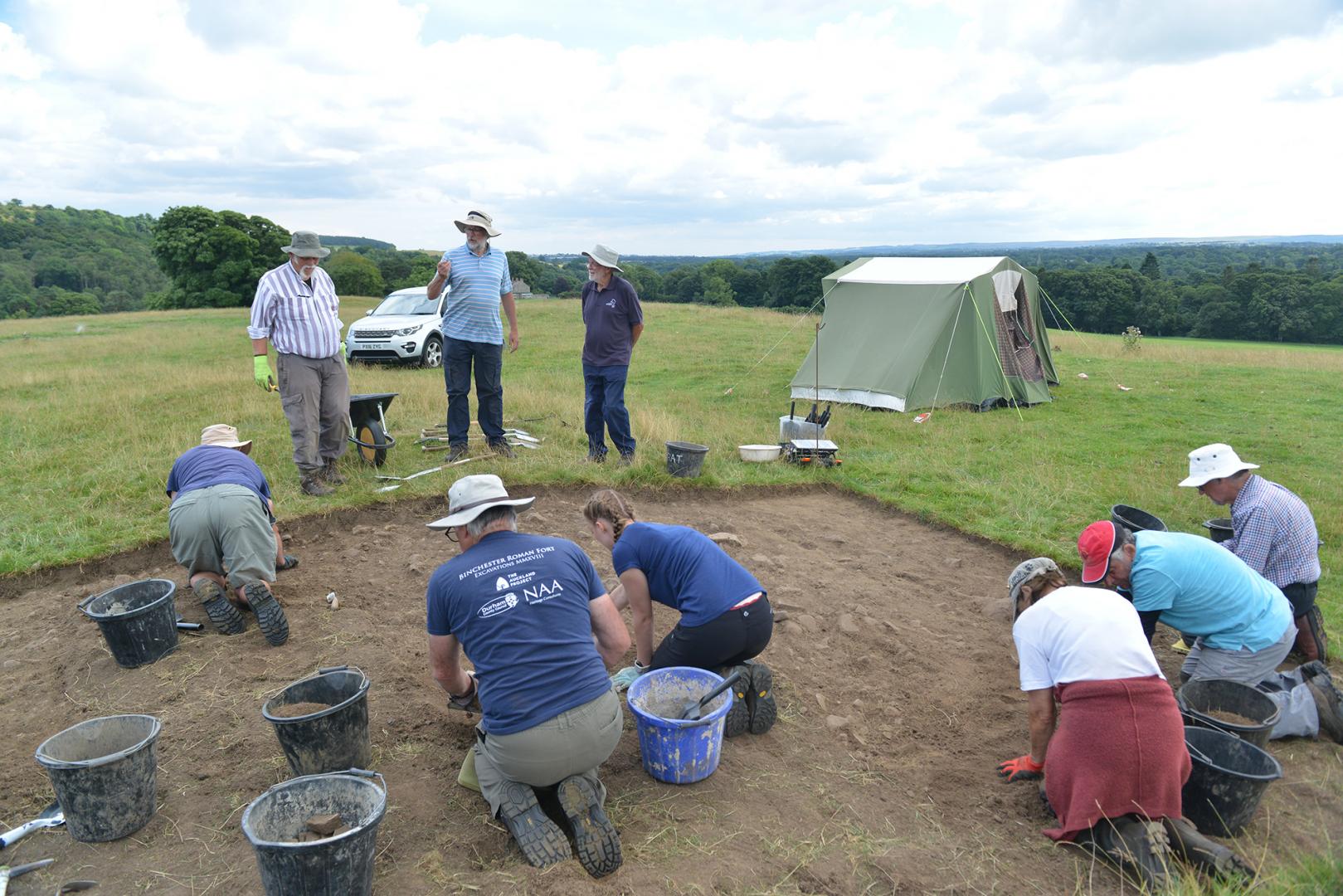RADIOCARBON dating could prove that an area near Cotherstone was home to an Iron Age settlement as far back as 500BC.
And more importantly an archaeological excavation at Gueswick Hills revealed what might have been a hilltop fort, which has been found nowhere else in Teesdale.
Archaeologists say the find could be important to the history of the North Pennines.
Altogether Archaeology, a volunteer group, led a three-week excavation of the site in August where they uncovered fragments of pottery, a Roman coin, flagstones and a partially made Iron Age bee-hive quern stone.
The community group of volunteer archaeologists was supervised by professional Dr Rob Young.
In a report by Altogether Archaeology, chairman Tony Metcalfe and field co-ordinator Dr Martin Green, said previous geophysics survey of the area had revealed a ditch probably encircled the hill and a trench was dug to investigate.
The ditch was found two metres below the surface.
The report said: “Our provisional interpretation is that in the Iron Age a defensive palisade of large timbers fixed in a trench was erected around the summit of the hill.
“The timbers were packed in place by the stones and bones in the ditch. In Northumberland and the Borders, dozens of these hill-top ‘palisaded enclosures’ have been identified.
“Often, they seem to have been constructed in the early Iron Age, around 500BC. Later on in the Iron Age, some were converted into hill forts with large banks and ditches.
“If our interpretation is correct, and we won’t know until we have the results of radiocarbon dates, then this will be very important to the history of Teesdale and the North Pennines.”
The group believes inside the palisade was a small native settlement with farming along the terraces on the side of the hill and nearby fields.
The report said: “Our other trench examined part of the settlement. We found yard-like areas which yielded pottery fragments of types used in the Iron Age and by natives during the Roman era. There was also a beautiful glass bead of a similar age.”
The group now hopes to carry out more magnetometry scanning early next year and resume excavation of the site in August 2022. Altogether Archaeology added: “One of the finds from this year’s excavation was a brooch, dating to just after the end of the Roman occupation, so the settlement may have still been in use in the 5th and 6th centuries.
“If so, this would be the only settlement known in the area from these ‘Dark Ages’, so a major discovery.”
Some of the discoveries from the latest excavation are now with Durham University’s archaeological labs being x-rayed, cleaned and preserved. Bones and charcoal fragments from the ditch have been sent for radiocarbon dating.
The dig was made possible through a grant of £1,700 from the County Durham Foundation and £500 for the carbon dating from the Yorkshire division of the Council for British archaeology.
Anyone interested in joining the group can visit altogetherarchaeology.org or contact the Mr Metcalfe at
[email protected]
ADVERTISEMENT
Dig may have unearthed ancient hill fort
ADVERTISEMENT
ADVERTISEMENT
ADVERTISEMENT





